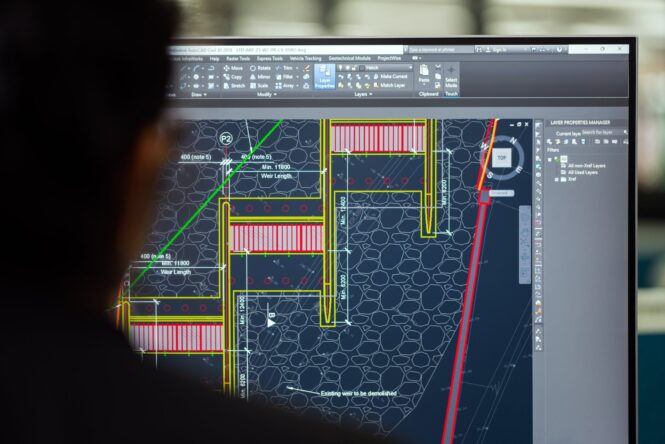There are several essential practices for deploying enterprise applications that web developers like yourself must follow. Software planning, development, and deployment procedures offer a series of complex challenges for web design teams. In order to properly navigate your team through the deployment process, there are several integral practices you need to follow. Following the best practices ensure your team is able to achieve reliable and repeatable program development. If you are interested in the top processes to improve the end-result of valuable software programs, read on to learn more about the essential practices for deploying enterprise applications.
Automate Testing Phases
In order to follow the best application deployment procedures, it is essential to automate individual software testing phases. Reliable testing is essential for your overall software development process. Through conducting multiple testing phases, you guarantee that software programs are ready for deployment. Within your deployment process, you have several forms of testing to conduct. First, you need integration testing to verify changes into larger applications. Next, functional testing checks the features of a formal test script to determine the overall quality of software.
Consider acceptance testing to validate a program’s functions for the user’s end-needs. At the same time, you need efficient quality testing procedures to guarantee all non-functional requirements are met. Furthermore, consider the importance of staging testing to ensure programs are ready for deployment. Proper software testing greatly increases the effectiveness of your project. Depending on the platform you develop software within, there are several strategies to automate all of essential tests to software deployment.
Utilize Containerized Technology

Taking advantage of containerized technology is one of the best practices web developers can utilize throughout software deployment. Containerization is an effective method to package applications, along with its various dependencies, isolated from all other applications or processes. Each container can hold the software itself, along with libraries, configuration files, and binary. Packaging applications within these containers allows universal operations across all operating systems or underlying hardware components.
At the same time, this technology facilitates deployment processes to a specific server. One of the most popular applications for containerizing technology is Docker. To best help you familiarize yourself with the platform, there are several integrative DevOps tools available. Companies like JFrog offer a universal set of DevOps tools that work with all major software technologies to accelerate the delivery of binaries, securely through your software delivery pipeline. Ensure you utilize containerized technology to follow the best processes for deploying enterprise applications.
Prioritize Security

Mark from AnyforSoft tells us that developers need to prioritize security throughout the deployment process. Throughout the planning, development, or deployment of software programs, responsibilities like auditing and compliance need to be a top priority. Proper security measures guarantee that your sensitive data never gets into the wrong hands. Proper compliance can be extremely stressful and time-consuming. However, it is absolutely essential to protect major interferences like reduced brand reputation, audit failures, cyberattacks, or data breaches.
Several development platforms integrate automated issue evaluations to ensure all potential security threats are promptly addressed. The top web designers understand the importance of security throughout the software development team. Throughout deploying enterprise applications, be certain to prioritize program security. Below are some of the many areas that security breaches in a software can damage a business:
- Brand reputation as mentioned above can be ruined. If the app is a security app that is hacked, this will be an event that many companies will not recover from.
- Data breaches due to an unsecure app can lead to massive lawsuits from various users.
- Preventative action is important as being reactive can lead to a variety of problems.
Focus On Continuous Integration

Throughout software planning, development, and deployment, web designers need to focus on continuous integration. Practicing continuous integration ensures higher quality of the end-product as well as improved development procedures. At the same time, constant integration implements a layer of risk mitigation to ensure more reliable code is created. These processes allow you to automatically pull recognizable code from a repository, rather than conducting independent research.
For developers, this greatly improves code confidence, as well as the consistency of deployment processes. Even more, continuous processes greatly boost communication and collaboration amongst your team. The ease of collaboration can directly impact the productivity of a team and time is money in all business scenarios. Throughout deploying enterprise applications, you guarantee that applications are deployed to each of your systems appropriately.
Integration is the name of the game in today’s world with enterprise applications being at the forefront. The ability to integrate a piece of technology within a number of systems provides convenience and efficiency. The top products around all industries are able to be integrated with major systems and platforms. Incompatible enterprise apps are going to alienate a potential segment of the company’s customer demographic. Consistent improvements and integration will take time but will be worth it ultimately.
Practice Load Balancing

Throughout the enterprise application deployment process, you need to practice effective load balancing. These practices help servers balance the loads. Proper balancing is essential to the overall software development and deployment process. Simply put, balancing is the process of allocating incoming network traffic across a specific group of back-end servers. If your development team consistently focuses on load balancing, you can guarantee the improved uptime of your servers. Modern computing requires high-traffic websites to process millions of requests simultaneously. Effective load balancing guarantees your servers are constantly in proper operations. Balancing guarantees servers are able to route specific requests, maximize performance speed, and ensure no server is overworked. Detail this balancing so the entire team’s effort will be needed to ensure uptime of servers is maximized.
There are several essential practices for web developers to effectively deploy enterprise applications. Most development teams benefit from automated testing phases. Utilizing containerized technology can improve application storage, portability, security, and automation. Be sure to prioritize security throughout your deployment process. At the same time, development teams need to focus on continuous integration. Furthermore, ensure that developers are constantly practicing strong load balancing tactics. Consider the points mentioned above to learn more about the essential practices for deploying enterprise applications.
 Imagup General Magazine 2024
Imagup General Magazine 2024



